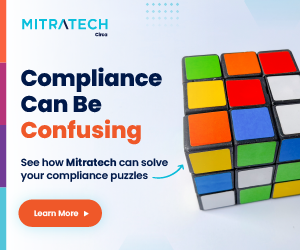HR Compliance Demystified
A comprehensive guide for employers
Posted on 10-29-2024, Read Time: 6 Min
Share:

Highlights:
- HR compliance refers to an organization's adherence to human resources-related laws and regulations, including labor laws, anti-discrimination statutes, and data privacy requirements.
- Effective HR compliance creates fair, inclusive workplaces that boost employee morale, productivity, and retention.
- Documentation and record-keeping are crucial in ensuring HR compliance within an organization.

Understanding HR compliance is crucial whether you’re a seasoned HR professional or just starting out. It involves adhering to various laws and regulations that govern the employer-employee relationship. From anti-discrimination laws to data privacy requirements, there are numerous areas where employers must comply to avoid legal repercussions.
But don’t worry – it’s not all doom and gloom! There are parts of HR compliance that are fascinating as well as fun.
What Is HR Compliance?
HR compliance refers to an organization's adherence to human resources-related laws and regulations, including labor laws, anti-discrimination statutes, and data privacy requirements. This compliance protects employee rights and helps organizations avoid legal issues.Effective HR compliance creates fair, inclusive workplaces that boost employee morale, productivity, and retention. There are several types of HR compliance that organizations need to address:
- Legal compliance (adhering to federal, state, or local employment laws)
- Industry-specific compliance (meeting regulations specific to certain sectors)
- Safety compliance (ensuring workplace safety standards are met)
- Data privacy compliance (protecting the confidentiality of sensitive employee information).
To maintain compliance, employers should monitor legislative changes, regularly review policies, and thoroughly document HR activities.
Types of Compliance in HR
There are several key areas of HR Compliance that employers need to be aware of:
- Employment law: This involves adhering to federal, state, and local laws regarding hiring practices, wages and hours, workplace safety, and more. Staying up to date on these laws is essential to avoid penalties.
- Diversity and inclusion: Organizations must provide equal opportunities regardless of race, gender identity, age, or disability as a legal requirement and ethical standard. This includes implementing policies that promote diverse recruitment and an inclusive work environment.
- Data privacy: Organizations must safeguard employee data from unauthorized access or breaches. Strong cybersecurity practices, such as secure networks and employee training, are crucial.
By recognizing these various types of HR compliance issues, businesses can take proactive steps toward ensuring they remain compliant at all times.
Common Compliance Issues
Addressing these common HR compliance issues requires proactive efforts from employers.Discrimination in the workplace
Workplace discrimination occurs when an individual is treated unfairly or differently based on protected characteristics such as race, gender, age, disability, religion, or national origin.This can manifest through hiring bias, unequal pay or benefits, denial of promotions or training opportunities, harassment by supervisors or coworkers, and even termination based on discriminatory reasons. These actions not only violate federal laws but also create a toxic work environment that hampers productivity and employee morale.
To combat discrimination in the workplace effectively, employers must establish clear policies prohibiting discrimination and harassment. They should provide comprehensive anti-discrimination training to all employees to ensure awareness of their rights and responsibilities. Additionally, implementing a complaint procedure that allows employees to report incidents without fear of retaliation is crucial.
Employers should also conduct regular audits to identify any potential discrimination and take prompt corrective action when necessary. By fostering a culture of diversity and inclusion within the organization from top to bottom, employers can mitigate the risk of discrimination claims while creating a more equitable working environment for everyone.
Security and Data Privacy
With the increasing reliance on technology in the workplace, protecting sensitive employee information has become more challenging yet essential.One key concern regarding security and data privacy is the risk of unauthorized access to employee data. Employers must implement robust cybersecurity measures to safeguard personal and confidential information from potential breaches or cyberattacks. This includes employing strong passwords, encryption techniques, firewalls, and regular software updates to protect against evolving threats.
Additionally, organizations should establish strict access controls to ensure that only authorized personnel have permission to view or handle sensitive employee information. Regularly reviewing user access privileges can help prevent unauthorized individuals from accessing confidential data.
Documentation and Record-keeping
Documentation and record-keeping are crucial in ensuring HR compliance within an organization. Accurate and organized documentation is essential for various reasons, including legal requirements, internal audits, and employee disputes.Maintaining comprehensive records allows employers to prove that they have met their obligations under employment laws. This includes keeping track of important documents such as employment contracts, job descriptions, performance evaluations, disciplinary actions, and other relevant paperwork.
Additionally, proper record-keeping helps protect the company in case of litigation or regulatory investigations. By having access to detailed records, organizations can demonstrate that they have followed established processes and procedures when making decisions related to hiring, promotions, terminations, or any other employment-related matters.
To ensure accurate record-keeping practices:
- Implement a standardized system: Establish clear guidelines for documenting all HR-related activities consistently across the organization.
- Train employees: Provide training to managers and supervisors on the importance of proper documentation practices and how to maintain accurate records. Use a learning management system!
- Regularly review records: Conduct routine audits of HR files to ensure completeness and accuracy.
By prioritizing documentation and record-keeping as part of your HR compliance strategy, you can mitigate risks associated with legal non-compliance while promoting transparency within your organization.
Best Practices for HR Compliance
Best practices for HR compliance ensure a smooth and legally compliant working environment. Here are some key strategies employers can implement:1. Keeping track of compliance obligations: It is essential to stay informed about the laws and regulations that apply to your industry and location. Regularly review and update policies to align with legal requirements.
2. Division of compliance responsibilities: Assign specific individuals or teams within the HR department to oversee different aspects of compliance, such as equal employment opportunity, data privacy, and wage and hour regulations.
3. Staying up-to-date with legal changes: Laws related to HR compliance are subject to frequent updates. Stay current by subscribing to industry newsletters, attending webinars or conferences, or consulting with legal professionals.
4. Regularly auditing HR policies: Conduct periodic audits of your HR policies and procedures to identify potential gaps or areas for improvement in terms of compliance.
5. Consistent application of policies: Ensure that all employees are aware of company policies and procedures through effective communication channels such as employee handbooks, training sessions, or online platforms.
6. Utilizing HR technology: Implementing an automated system can streamline various processes related to compliance management, including record-keeping, reporting, and document retention.
7. Creating an HR compliance checklist: Develop a comprehensive checklist outlining all relevant legal requirements applicable within your organization’s jurisdiction. This tool will help you track ongoing adherence efforts effectively.
By adopting these best practices consistently throughout your organization’s operations, you can mitigate risks associated with non-compliance while promoting fairness, transparency, and accountability among employees. Remember, achieving full adherence requires continuous effort, but it will ultimately contribute to creating a healthy work culture.
Ready to Reduce Your Risk?
Are you tired of struggling to manage your human resources compliance processes? Look no further! Mitratech offers cutting-edge HR compliance software solutions designed to streamline and simplify your HR operations.Take the first step towards transforming the way you handle compliance with our industry-leading tools. Sign up for a demo today and witness firsthand how Mitratech’s software can revolutionize your
HR processes.
HR processes.
Author Bio
 |
Noel Diem currently serves as the Senior Marketing and HRC Content Manager at Mitratech. |
Error: No such template "/CustomCode/topleader/category"!


